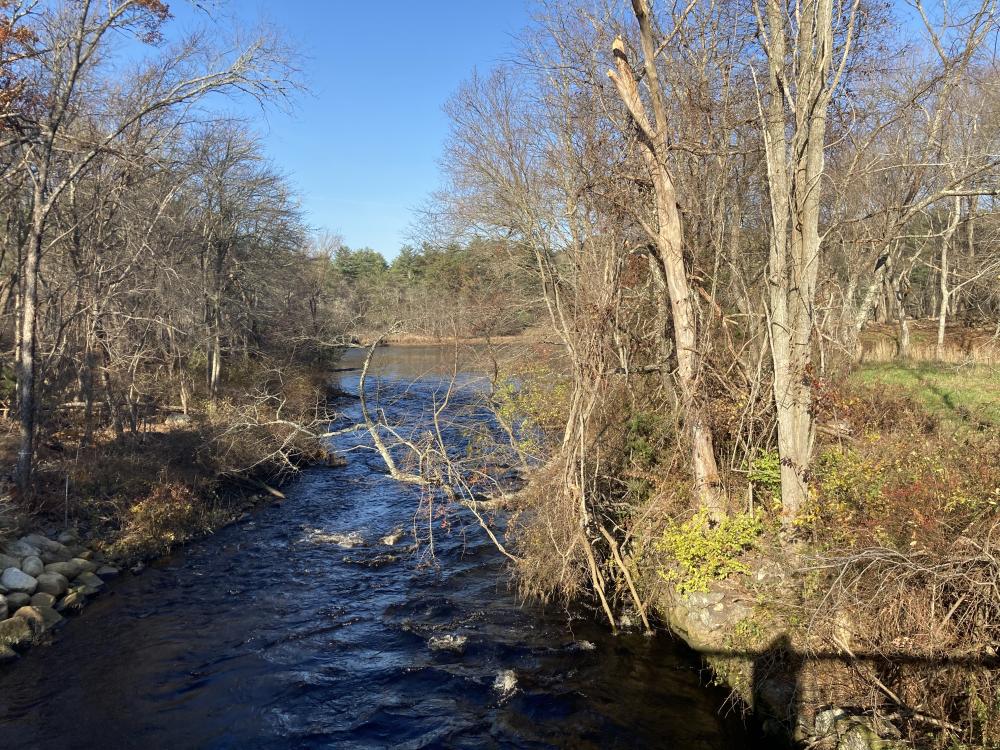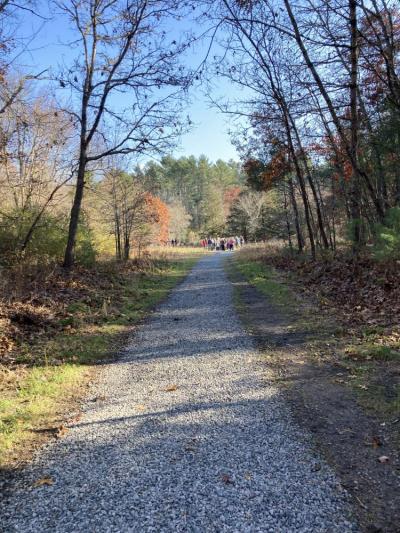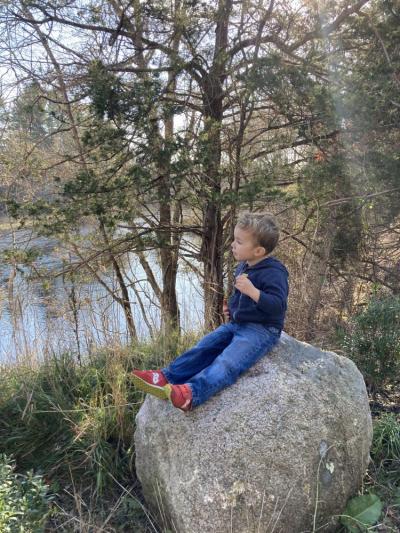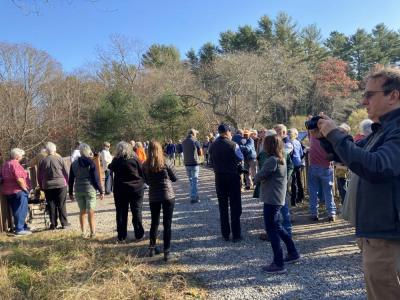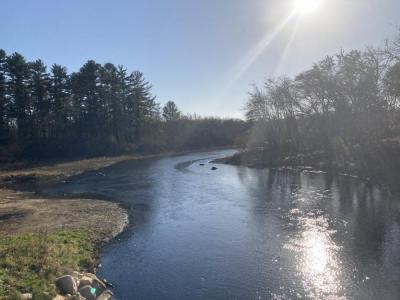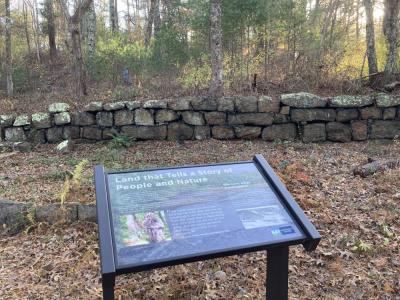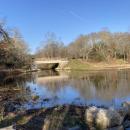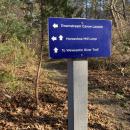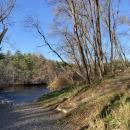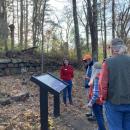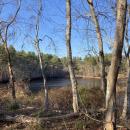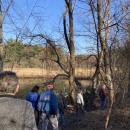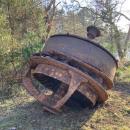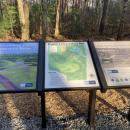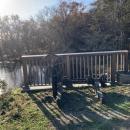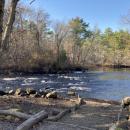Weweantic River Reserve Horseshoe Mill now open
Where once a crumbling dam obstructed the Weweantic River, the water now flows freely, allowing fish to travel to ancestral spawning grounds and people to safely explore the area.
The Weweantic River Reserve at Horseshoe Mill is the newest Buzzards Bay Coalition property in Wareham, located at the end of Station Street (past the Decas School). Officials from the coalition and local and state government agencies spoke at the reserve’s grand opening on Nov. 18, which was followed by guided tours of the property.
The coalition purchased the property in 2012 with the intention of removing the derelict dam — and President Mark Rasmussen said that the coalition’s members had been eyeing the property for at least 20 years.
The Weweantic is the longest river connected to Buzzards Bay, Rasmussen said, and accounts for 20 percent of the freshwater flowing to the bay.
The river has been fished for centuries by Wampanoags.
In the late 1700s, Rasmussen said, colonists saw another opportunity: water power. The first small mill at the site dates back to those days, and the land later hosted industries including nail factories and the Standard Horseshoe factory, which the site is now named after.
By the late 50s, those industrial uses were abandoned. The dam stayed and continued to deteriorate.
In addition to being an eyesore, the dam created a number of ecological problems, Rasmussen explained.
The river serves as an important habitat for a number of species of fish, including rainbow smelt, herring, perch, and eels — many of whom return to the river each year to spawn.
The dam blocked the fish’s ability to reach fresh water and forced them to spawn in the rapids before the dam. When the tide was low, eggs would be exposed to air and dry out.
The dam also created a pinch point for fishing, Rasmussen said, leading to overfishing.
The property was also dangerous for human visitors.
Since the dam’s removal, Rasmussen said the river has found its old path. Salt marsh will be able to spread, and the water quality and habitat will be improved.
Sara Quintal, who directed much of the project, said that since the dam’s removal, fish eggs have been spotted far beyond the old dam — a hopeful sign that the fish will expand to their former habitat.
“We want to give the fish a chance,” Quintal said. She said that removing the dam gave the fish access to three more miles of the river.
In addition to removing the dam, the coalition cleared a number of trails and added two kayak and boat launches, informational plaques, a gravel parking lot.
The two kayak launches are to allow people to avoid boating through the same shallows that proved hazardous to fish eggs, so there’s one on each side of the old dam’s location — now a bridge.
One launch, Quintal said, is located at the location of a dam so old the coalition was unable to find any written record of it. Carbon-dating of the wood used in the dam showed it to be from the late 1700s — the same time period as the first mill. A small stone foundation from that mill is located near the site of the historic dam.
The other launch also builds off the site’s industrial history, as it’s located near the end of the old raceway. The raceway, which Quintal said was in dangerous condition, was a channel intended to help the fish get around the dam.
Now, the concrete sides of the raceway serve as the edge of the trail down to the second kayak launch.
Reuse and recycling was a priority throughout the project, Quintal said. The coalition and volunteers made extensive use of the stone and downed trees on the site to line trails. The steps down to the kayak launches are bordered with logs from invasive locust trees cut down by volunteers.
In total, the project cost $1.2 million. About half that funding comes from the 2003 Bouchard Barge 120 oil spill, and none came from the town.
“Any time we have the opportunity to make one of our natural resources more beautiful and more accessible, that is an opportunity we must jump on,” said Rep. Susan Williams-Gifford.
Select Board Chair Judith Whiteside asked the crowd to imagine the sounds that filled the area when it was an active horseshoe mill. Now, the rushing of the river is part of the “symphony of natural sounds” at the site, Whiteside said.
The restoration also helps insulate the region from the impacts of climate change.
“Now that the Weweantic River is flowing naturally, 90 acres of coastal wetlands are rebuilding, and increasing resilience against sea level rise and storms,” said Carrie Selberg Robinson, Director of NOAA’s Office of Habitat Conservation.
For more information about the reserve, go to https://www.savebuzzardsbay.org/places-to-go/horseshoe-mill/.



